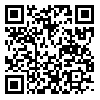Volume 17, Issue 3 (Vol 17,No.3, Atumn 2021 2021)
irje 2021, 17(3): 264-271 |
Back to browse issues page
Download citation:
BibTeX | RIS | EndNote | Medlars | ProCite | Reference Manager | RefWorks
Send citation to:



BibTeX | RIS | EndNote | Medlars | ProCite | Reference Manager | RefWorks
Send citation to:
Heidari S, Karami M, Zahraei S, Sedighi I, Azimian Zavareh F. Estimation of Fixed and Dynamic Alarm Threshold Levels of Meningitis and Its Outbreak in Iran. irje 2021; 17 (3) :264-271
URL: http://irje.tums.ac.ir/article-1-7037-en.html
URL: http://irje.tums.ac.ir/article-1-7037-en.html
1- , mkarami@sbmu.ac.ir
Abstract: (1862 Views)
Background and Objectives: Given the importance of the early detection of any outbreak or change in the trend of meningitis, this study was conducted to estimate the fixed and dynamic alarm threshold levels of meningitis and its outbreak in Iran.
Materials and Methods: In this study, the data of all patients from 20¬ March 2016 to 20 March 2019 were extracted from the National Meningitis Disease Surveillance System. Alarm threshold levels were calculated separately for different seasons and provinces. To determine the alarm threshold levels, four methods of Upper Control Limit (UCL), relative increase, statistical cut off points, and recommendations provided by the World Health Organization were used.
Results: The alarm threshold levels for confirmed cases were determined for Iran according to the upper limits of cumulative sum (CUSUM) algorithm and the statistical cut off points based on the 90th percentile, 2 cases per day for Iran. The fixed amount was 3 to 5 cases per week in populations under 30,000 and 5 to 7 per week in populations between 30,000 and 100,000. According to the relative increase method, a 30% increase in one week compared to previous weeks was considered as the threshold level.
Conclusion: The use of alarm threshold levels reported in this study can be a basis for detecting meningitis outbreaks.
Materials and Methods: In this study, the data of all patients from 20¬ March 2016 to 20 March 2019 were extracted from the National Meningitis Disease Surveillance System. Alarm threshold levels were calculated separately for different seasons and provinces. To determine the alarm threshold levels, four methods of Upper Control Limit (UCL), relative increase, statistical cut off points, and recommendations provided by the World Health Organization were used.
Results: The alarm threshold levels for confirmed cases were determined for Iran according to the upper limits of cumulative sum (CUSUM) algorithm and the statistical cut off points based on the 90th percentile, 2 cases per day for Iran. The fixed amount was 3 to 5 cases per week in populations under 30,000 and 5 to 7 per week in populations between 30,000 and 100,000. According to the relative increase method, a 30% increase in one week compared to previous weeks was considered as the threshold level.
Conclusion: The use of alarm threshold levels reported in this study can be a basis for detecting meningitis outbreaks.
Type of Study: Research |
Subject:
Epidemiology
Received: 2022/01/18 | Accepted: 2021/12/1 | Published: 2021/12/1
Received: 2022/01/18 | Accepted: 2021/12/1 | Published: 2021/12/1
Send email to the article author
| Rights and permissions | |
 |
This work is licensed under a Creative Commons Attribution-NonCommercial 4.0 International License. |





